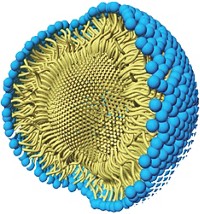Advertisement
Grab your lab coat. Let's get started
Welcome!
Welcome!
Create an account below to get 6 C&EN articles per month, receive newsletters and more - all free.
It seems this is your first time logging in online. Please enter the following information to continue.
As an ACS member you automatically get access to this site. All we need is few more details to create your reading experience.
Not you? Sign in with a different account.
Not you? Sign in with a different account.
ERROR 1
ERROR 1
ERROR 2
ERROR 2
ERROR 2
ERROR 2
ERROR 2
Password and Confirm password must match.
If you have an ACS member number, please enter it here so we can link this account to your membership. (optional)
ERROR 2
ACS values your privacy. By submitting your information, you are gaining access to C&EN and subscribing to our weekly newsletter. We use the information you provide to make your reading experience better, and we will never sell your data to third party members.
Polymers
Heat unzips polymethacrylates
Catalyst-free depolymerization method could make these materials more affordable
by Bethany Halford
March 9, 2022

A catalyst-free method for pulling apart certain polymers could help speed the industrial adoption of controlled radical polymerization—a polymer-building reaction that’s popular with researchers but hasn’t yet found its way into many products. The new depolymerization returns polymethacrylates made in this way to their starting monomers with up to 92% conversion. These monomers could then be repolymerized to recreate the original polymer or combined with other monomers to create materials with different properties.
“This a much better way than conventional recycling, where you usually start with a product and you go to a lower-end application,” says Athina Anastasaki, a polymer materials professor at the Swiss Federal Institute of Technology (ETH) Zurich who led the depolymerization research.
Controlled radical polymerization lets chemists precisely tailor the molecular weights of the polymers they make. One type of this polymerization method, known as RAFT polymerization, does so by using capping groups, known as RAFT agents. These groups sit at the end of the polymer chains and mediate the radical polymer growth process.
“What we asked ourselves was whether you could achieve the reverse process: unzip the polymer chains with the ultimate goal to not only regenerate the monomer but ideally also the RAFT agent,” Anastasaki says. Although RAFT polymerization gives chemists better control over a polymer’s molecular weight, making polymers this way is more expensive than other approaches. This is in part because of the expensive RAFT agents. Anastasaki reasoned that if there was a way to regenerate both the monomer and the RAFT agent, industry would find the polymerization method more attractive.
Chemists in Anastasaki’s lab achieve the polymethacrylate unzipping by making a dilute solution of the polymer in dioxane and heating it to 120 °C (J. Am. Chem. Soc. 2022, DOI: 10.1021/jacs.2c00963). They use a dithiobenzoate RAFT agent (example shown; dithiobenzoate in red). Although others have depolymerized materials made from controlled radical polymerization, those examples used metal catalysts and higher temperatures. Those methods also had lower monomer yields or degraded the RAFT agent, says William M. Gramlich, a polymer chemist at the University of Maine. “This is interesting work because it demonstrates new conditions for degrading polymers to a high yield of monomer while retaining the agent used for the controlled radical polymerization,” he says in an email.
One concern Gramlich has about the work is the dilute solutions that are used. “I am interested to see future work that could make this more industrially relevant,” he says.
Anastasaki says her group is addressing this issue—as well as the use of dioxane—by trying to accomplish the depolymerization in a flow system that would recycle the solvent. Next, Anastasaki has her sights set on unzipping polystyrene.





Join the conversation
Contact the reporter
Submit a Letter to the Editor for publication
Engage with us on Twitter